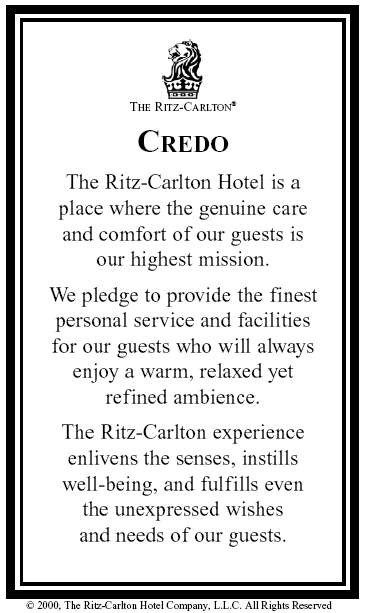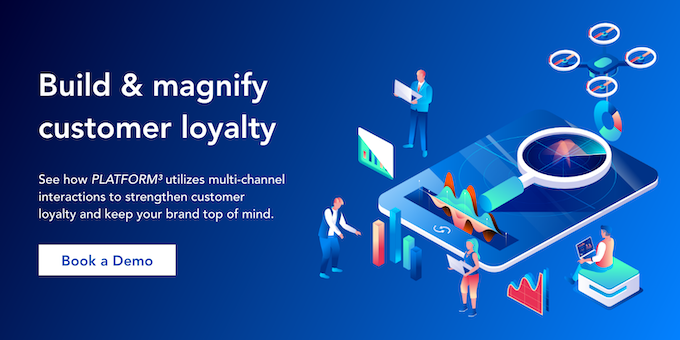6 Strategies to Boost Consumer Engagement
Maslow’s hierarchy of needs illustrates five basic categories of needs that each individual has: physiological, safety, love, esteem, and self actualization. According to Maslow, when a lower need is met (ex., physiological), we look to fulfill the next (ex., safety). Each day, we are motivated to take actions that help us meet our personal needs and the needs of others. How does this theory relate to consumer engagement?
Why Your Brand Should Engage Consumers
You may have heard of Maslow’s hierarchy of needs, but have you ever considered that consumers have their own hierarchy of needs? Each consumer has needs that are met through the products they buy.
What elements are found in the consumer’s hierarchy of needs?
First, consumers have functional needs. Consumers look for products and services that work for their needs.
Next, consumers require attention. When consumers inquire about the function, cost, or details of a product or service, they expect to receive a timely response. Being left in the dark by a brand is a frustrating experience for consumers looking for answers. If consumers are looking for more information or trying to express a complaint, their need for attention should be met, or brands may risk losing valuable customers.
Consumers also have relational needs when they engage with brands. 71% of consumers expect personalized experiences while shopping, showing that they desire more than a surface-level buy/sell relationship with the brands they interact with. It’s crucial for brands to nurture these relationships through tactics such as loyalty programs or one-to-one messaging.
Additionally, consumers need to belong to the brands they interact with. They connect with brands that align with their values or represent a cause that they are passionate about. When brands invite consumers in on their culture and values, they provide an opportunity for people to be a part of a brand community. This fulfills the human desire to be a part of something bigger than themselves.
Lastly, consumers need ownership. Suppose your brand provides a functional product or service, gives full attention to the customer, dedicates resources to consumer relationships, and gives consumers a place to belong. In that case, consumers will take ownership of your brand. This is when they strongly identify with your brand values and become advocates of your product and services to their friends, family, and the broader community.
Each consumer need builds on itself. Your product or service must be functional to answer consumers’ questions about it. You can’t have a relationship with your consumers without giving them attention. In order to create a space of belonging for customers, you need to have a relationship with them. Lastly, consumers will most likely feel ownership over your brand when all previous needs are fulfilled. Awareness of the consumer’s hierarchy of needs can help your brand to engage each customer along the path to purchase effectively.
Engaging with consumers takes time and effort that many brands feel they don’t have the capacity for, but the sacrifice is worth it. Top-performing retailers are 97% more likely than others to test marketing campaigns and customer journeys frequently, 47% more likely to train team members on customer engagement tech and approaches, and 41% more likely to analyze the results of consumer engagement tactics. For companies that choose to improve their customer experience, 84% reported increased revenue. The data shows that brands that put time, resources, and energy into consumer engagement are often successful at drawing and keeping customers.
Six Strategies to Boost Consumer Engagement
1. Use Gamification
Gamification is a unique and effective consumer engagement tactic because of its ability to create fun, memorable experiences that require active participation and ongoing engagement, appealing to shorter attention spans. Game mechanics like points, badges, leaderboards, and rewards help to capture interest and foster customer loyalty.
For example, Duolingo is a language-learning app that leverages multiple types of game mechanics to retain users’ attention and increase consumer engagement. Users can learn a new language and earn experience points, badges, and special achievements simultaneously. They’re also encouraged to maintain a daily streak and compete against other users on the leaderboard.
2. Lead Consumers to Social Channels.
Another way to engage with consumers is to invite them to like, follow, or subscribe to your social channels. RetailX found that 89% of brands lead customers to their social media channels from their landing page. Worldwide, people spend an average of 2.5 hours per day on social media. This means that shoppers who follow a brand on social media will be more likely to see its posts regularly and choose to engage.
Structube implements this strategy by inviting customers on their landing page to post their styled furniture on social media with the hashtag #mystructubestyle for a chance to win a $100 gift card. This encourages customers to engage with the brand through social media and helps Structube spread brand awareness through their existing customers to their personal social media followers.
3. Implement a Data Driven Loyalty Program
Loyalty programs are a long-term, full-scale marketing tactic where businesses give consumers an incentive to continuously engage with their brand. They consist of three components: objectives, actions, and rewards. The main objective of a loyalty program is to drive sales and retention, increase engagement and improve credibility. Brands may also use them to attract new customers and gain user insights. Actions refer to consumer behaviors that brands want to reinforce, such as making purchases, sharing content, and leaving reviews. Lastly, rewards are the driving force that pushes consumers to complete desired actions so that brands can achieve their business objectives, including free products, merchandise, discounts and special offers, and so on.
Starbucks, for example, has an extremely successful loyalty program accessed by members through its website or app. Members earn points, or stars, anytime they purchase a Starbucks product. Once they gather enough points, they can redeem them for rewards. Starbucks app users are 5.6x more likely to visit Starbucks daily, encouraging higher sales. Additionally, Starbucks is able to collect first-party data from participating members, allowing them to personalize the consumer experience by suggesting drinks or sending consumers a free drink coupon on their birthday.
4. Start Dynamic Messaging
Push notifications help to catch consumers’ attention, but you don’t want to overload them with too many notifications. The average US app user receives 46 push notifications per day, so how can your brand stand out amidst the noise? It is crucial to implement dynamic messaging in order to send the right message to the right people. This tactic allows you to segment your consumers and target messages to them based on specific actions they take. Dynamic messaging goes beyond push notifications and can also be done through email and SMS marketing strategies.
Mifa, a skincare company, sends personalized emails to customers who have left items in their cart online. These emails include a discount code which acts as an incentive to purchase. This personalized touch reminds customers of items they have been considering and gives them an extra push to make a purchase.
5. Turn Complaints into Compliments
It’s easy to fear that you’ve lost a customer when you receive a complaint, but what if you saw it as the perfect opportunity to create an experience that makes a customer want to return? When you choose to put time, resources, and energy into consumer engagement, it can make responding to consumer complaints an approachable task. When a consumer complains, they want their complaint to be listened to and seriously considered. If they are a loyal customer, they may expect above and beyond compensation because they have invested a lot into your brand. This is an excellent opportunity to express value for your customer by going beyond their expectations through the way you problem-solve and compensate them for the mishap.
The Ritz-Carlton, an international luxury hotel brand, has found great success in consumer engagement through its focus on excellent customer service. Each employee is empowered to spend up to $2,000 to help solve any problem a customer may have, which they can spend without needing to ask a manager or supervisor. The hotel co-founder, Horst Schulze, gave his employees this autonomy in hopes of retaining customer loyalty by going above and beyond their expectations. This freedom has allowed employees to get creative in caring for customers when they aren’t happy with their experience.
6. Incorporate Video Content
Video content is an effective avenue for storytelling and a great way to highlight specific products or services that your brand offers. Additionally, digital marketing is undergoing a significant shift toward video content with the rise of YouTube and TikTok. Over 50% of consumers desire more video content from the brands they follow, so now is a great time to start producing video content if you haven’t already. You could even experiment with an interactive live shoppable video. A shoppable video is a marketing tool that presents retail products via an entertaining video and makes them available for purchase through embedded links. Viewers can click these links as they pop up throughout the video. When a link is clicked, viewers can purchase the product without leaving the video page. Shoppable videos simplify the consumer journey, enhance customer engagement, and improve sales.
Walmart, for example, launched a live shopping option where influencers, industry leaders, and Walmart associates can host shoppable livestreams featuring different products and brands. Meredith Duxbury, a beauty influencer, hosted a livestream via Walmart titled “Halloween Beauty Looks”. With this livestream, Walmart was able to highlight specific makeup products. Through this live shopping initiative, they can host multiple livestreams per week that feature a variety of products, including skincare, baby food, back-to-school materials, or supplies. They attract viewers by having hosts like TikTok sensation Chloe Mitchell or pop star Willow Smith. This displays how large retailers can integrate live shopping into their sales strategy through creative partnerships.
What to Avoid
Consumers know they have the power of choice, so when they have a bad experience with a brand, they always know they can go somewhere else. Here are some things your brand should be aware of when trying to improve consumer engagement:
Wrong information
This can range from inconsistent information between your website and what your employees are saying, to information that hasn’t been updated, to a lack of information that is available. 72% of consumers say incorrect or inaccurate information would cause them to lack trust in your brand and look elsewhere.
Bad customer service
Customer-facing employees have the power to make a customer’s experience great or terrible. 75% of customers say they won’t return to a brand if an employee is rude, apathetic, or lacks knowledge.
Contradictory experiences
It is crucial that your company is consistent with the values you represent in your branding and customer experience. For example, brands that pride themselves in inclusivity should never have their employees prejudiced against customers based on their class, race, gender, or sexuality.
Engage Consumers with a Data-Driven Loyalty Program
Keeping consumers’ hierarchy of needs top-of-mind while implementing consumer engagement tactics will help your brand to foster customer loyalty, build brand trust, increase sales and improve ROI. Brands must focus on creating quality products and services while providing consistent messaging and experiences to boost their brand’s value and reputation.
With 3 tier logic’s PLATFORM³, brands can build thriving communities through short-term promotions and full-scale loyalty programs. Modules like Points & Gamification, Dynamic Messaging, and Data Capture & Analytics provide marketers with the tools and information they need to nurture ongoing relationships with their customers. To learn more, chat with an expert today.








